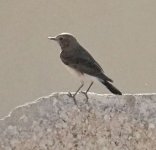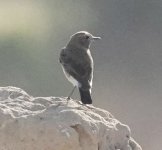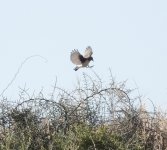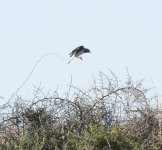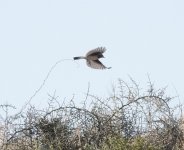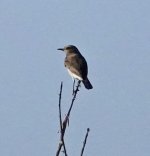KenM
Well-known member
Came across this bird at the Architectural Ruin on the headland, it did look odd…ie being particularly dark, more so than ye’r average female/imm type Eastern Black-eared Wheatear.
As far as the images are concerned, it was unfortunate that I was always following it into the sun.
That said, above the seemingly all dark tail there was a band of grey, which I thought odd, also the flanks had a “rusty” wash seemingly at odds to EBEW, further, I noted the pp seemed long, which would be a better fit for the default EBEW and rule out anything of an Eastern promise that I’m aware of?
Cheers
As far as the images are concerned, it was unfortunate that I was always following it into the sun.
That said, above the seemingly all dark tail there was a band of grey, which I thought odd, also the flanks had a “rusty” wash seemingly at odds to EBEW, further, I noted the pp seemed long, which would be a better fit for the default EBEW and rule out anything of an Eastern promise that I’m aware of?
Cheers




